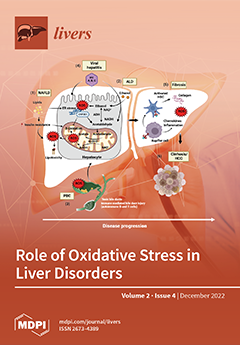Open AccessEditor’s ChoiceArticle
Risk Prevention and Health Promotion for Non-Alcoholic Fatty Liver Diseases (NAFLD)
by
Adnan Khan, Heather M. Ross, Natalia Salinas Parra, Sarah L. Chen, Kashyap Chauhan, Makala Wang, Brian Yan, John Magagna, Jake Beiriger, Yash Shah, Taha Shahzad and Dina Halegoua-DeMarzio
Cited by 10 | Viewed by 6926
Abstract
Non-alcoholic fatty liver disease (NAFLD) is a serious clinicopathological condition that is recognized as the most frequent chronic liver disease, affecting 14–30% of the world’s population. The prevalence of NAFLD has rapidly grown and is correlated with the growth in obesity and type
[...] Read more.
Non-alcoholic fatty liver disease (NAFLD) is a serious clinicopathological condition that is recognized as the most frequent chronic liver disease, affecting 14–30% of the world’s population. The prevalence of NAFLD has rapidly grown and is correlated with the growth in obesity and type 2 diabetes, among other factors. NAFLD often results in long-term complications including cardiovascular disease, liver cirrhosis, and liver fibrosis. This paper provides an updated overview of NAFLD with a focus on epidemiology, etiology, pathophysiology, screening, complications, and pharmacological therapies to identify effective risk prevention and health promotion.
Full article





